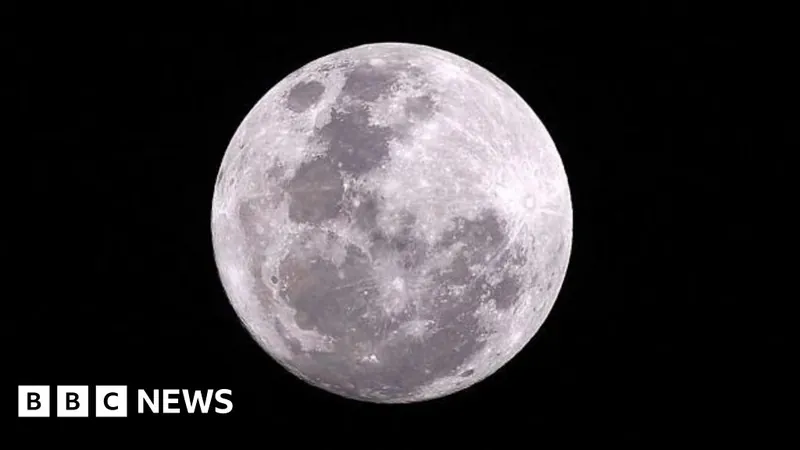
Asteroid Threat to the Moon Rises: What You Need to Know!
2025-04-04
Author: Wei Ling
In a surprising twist, NASA has revealed that the chances of asteroid 2024 YR4 impacting the Moon have increase significantly, sparking renewed interest and concern among space enthusiasts and scientists alike.
Initially, when this large asteroid was discovered, its likelihood of hitting Earth was estimated to be exceptionally low—merely 0.004% for a potential impact in 2032.
However, experts have now shifted their focus to the Moon, where the odds of a collision have more than doubled from 1.7% to 3.8% for the same date: December 22, 2032.
This recalibration of risk stems from enhanced observations conducted by advanced telescopes, including the renowned James Webb Space Telescope. NASA commented, "Even though there is a 96.2% chance that 2024 YR4 will miss the Moon, any impact would not alter the Moon's orbit."
The asteroid's size has been narrowed down to dimensions between 53 and 67 meters—comparable to a 10-story building, making it large enough to cause significant surface disruptions if a collision were to occur.
Asteroid 2024 YR4 was first detected in December last year in Chile. Since its discovery, numerous other objects have skimmed by Earth, even closer than our natural satellite.
Although there may have also been smaller impacts on our planet, many of these incidents often go unnoticed as they burn up in the atmosphere.
The Moon has a storied history of impacts, with its surface covered in craters formed by past collisions from asteroids and comets over billions of years.
A new impact event, while still extremely unlikely, could present a unique opportunity for scientists to observe firsthand how the Moon reacts to such occurrences.
Professor Mark Burchell from the University of Kent commented on the potential for a lunar impact: "This would be a remarkable experiment and an extraordinary chance to study the Moon's response to such an event."
He further implied that the collision would be visible through telescopes and possibly even binoculars, sparking excitement among amateur astronomers.
NASA has plans for more observations of 2024 YR4 with the Webb telescope next month, aiming to gain deeper insights into this intriguing asteroid.
As we keep our eyes on the sky, the world watches to see what unfolds with this cosmic visitor. Will we witness a lunar spectacle, or will the asteroid make a harmless pass? Stay tuned!




 Brasil (PT)
Brasil (PT)
 Canada (EN)
Canada (EN)
 Chile (ES)
Chile (ES)
 Česko (CS)
Česko (CS)
 대한민국 (KO)
대한민국 (KO)
 España (ES)
España (ES)
 France (FR)
France (FR)
 Hong Kong (EN)
Hong Kong (EN)
 Italia (IT)
Italia (IT)
 日本 (JA)
日本 (JA)
 Magyarország (HU)
Magyarország (HU)
 Norge (NO)
Norge (NO)
 Polska (PL)
Polska (PL)
 Schweiz (DE)
Schweiz (DE)
 Singapore (EN)
Singapore (EN)
 Sverige (SV)
Sverige (SV)
 Suomi (FI)
Suomi (FI)
 Türkiye (TR)
Türkiye (TR)
 الإمارات العربية المتحدة (AR)
الإمارات العربية المتحدة (AR)